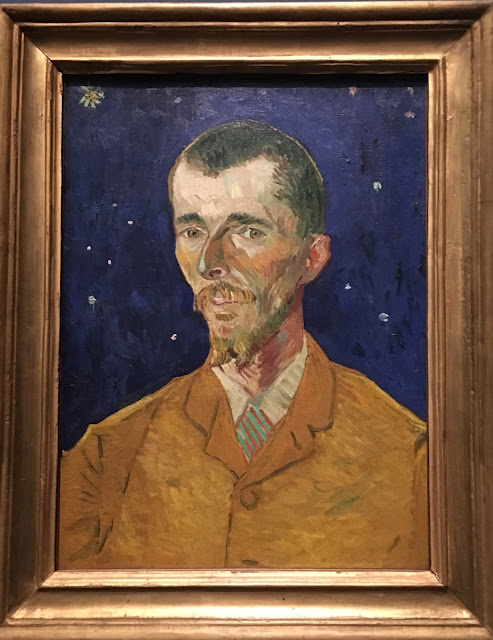
I painted "Lightly Beaten #1" almost 2 years ago. Much of my work is now inspired by women and children's issues. And an article I read in the newspaper sparked this idea.
I was not satisfied with this painting, even though painting the decorative mosque took a lot of time. I later used it as a practice piece for applying gold leaf. (That is probably never going to be my thing.)
But I still liked the idea driving the painting, so I took it along to Fran's workshop, where she inspired me with "What if?"

What if I neutralized most of the painting, leaving the running child in color? What if one of the women seated outside of the mosque was also in color? Would that help tell a story?
I had painted this in a workshop, working fast to make the most use of my time with Fran--meaning letting many "What if's" come my way.
But now in my own studio, I continued to work with this idea. This time going more toward my current goals: simplify more, use patterns, paint flat. So here is the process I used to create the next painting from one idea.
I started out with two neutral, flatly painted colors. I protected the women, archway and child with two new tools.
Oramask stencil film #13 is much easier to work with than contact paper and it can be reused. It is pretty leak proof if you burnish down the edges. (thanks Geoff McCormack)
And a student (Mary Holt) in one of my workshops introduced my to Nichiban tape, another great product for protecting.
I lifted the windows, pillars and the outer arch using plastic protection and a good, clean, well wrung out , natural sponge.
I made some stamps/stencils to add a different element to the piece, including some language--my apologies to anyone who reads Urdu.

With this I began to add my pattern making. Then added the darks.
Creating the figures in the doorway was a bit challenging--lifting, but not too much. I wanted to give them a mysteriousness.
Finally it was time to put in the color.
Simplify more--Check
Use patterns--Check
Paint flat--Check
I would love to hear your thoughts.



















































